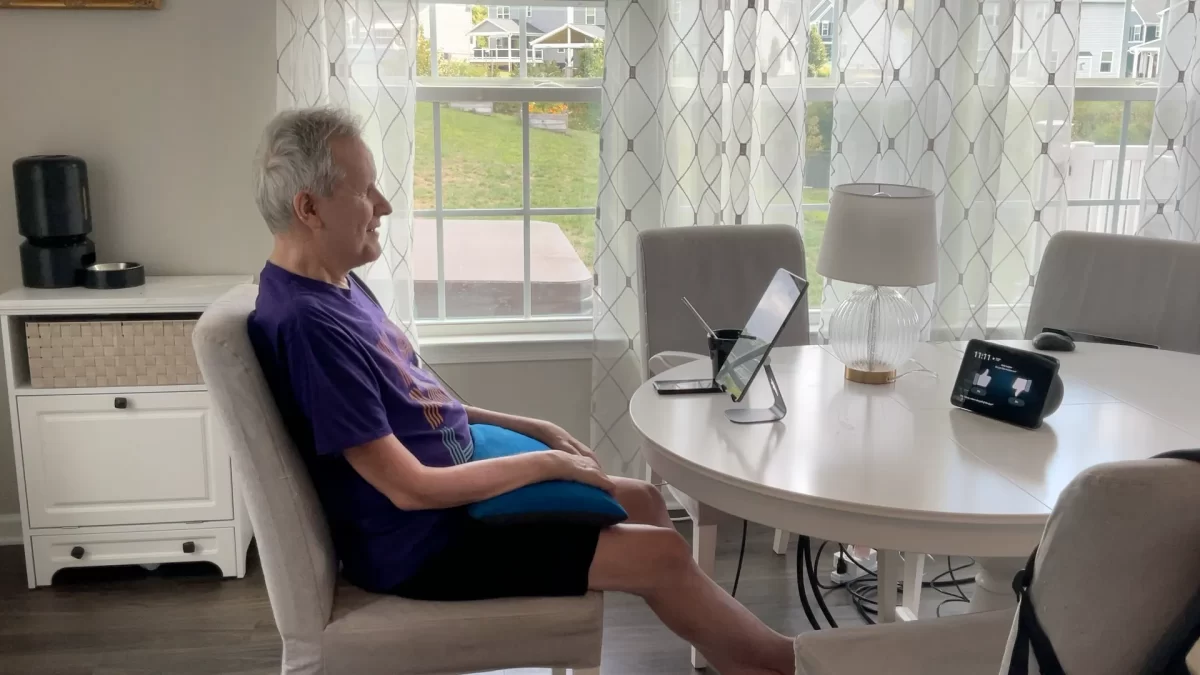
Cybersecurity Kit for Kids Offers Lessons in Online Safety
September 19, 2024
Apple’s New Passwords App May Solve Your Login Nightmares
September 19, 2024Mark, a 64-year-old with amyotrophic lateral sclerosis, or ALS, uses Amazon Alexa all the time using his voice. But now, thanks to a brain implant, he can also control the virtual assistant with his mind.
ALS affects the nerve cells in the brain and spinal cord, causing loss of muscle control over time. Mark, who asked that his last name not be used, has limited mobility as a result of his condition. He can walk and talk but has no use of his arms and hands. As part of a clinical trial, he received a brain-computer interface, or BCI, made by startup Synchron in August 2023.
Synchron is developing a BCI that decodes brain signals to allow people with paralysis the ability to control digital devices with their thoughts alone. On Monday, the company announced that its BCI can now be used with Alexa without the need for voice or physical interaction with a touchscreen. Synchron says Mark is the first person to use Alexa with an implanted BCI.
“People with paralysis lose their freedom of expression,” says Thomas Oxley, Synchron’s CEO. The company wants to restore some of that freedom to patients by integrating its BCI system with consumer technology.
Synchron is one of several companies, including Elon Musk’s Neuralink, aiming to commercialize BCIs. Researchers have been studying these interfaces for decades, mostly in university labs, but no company has received regulatory approval to sell one. Synchron has implanted its BCI in six people in the US and four in Australia as part of early-stage studies and is gearing up to begin a larger trial with more participants.
With the BCI, Mark could already operate an iPhone, iPad, and computer with his thoughts to surf the internet or compose emails. With the Amazon integration, he can control Alexa with a Fire tablet to turn the lights on and off in his house, watch TV, make video calls, play music, control his Ring security camera, read books on Kindle, and shop on Amazon.
“It’s pretty exciting and freeing to keep my independence,” Mark says. “Some days can be more challenging, especially depending how I’m feeling, but the layout of the Amazon tablet makes it pretty easy to interact with and complete the tasks I need to.”
Amazon declined to respond to a request for comment.
Synchron has also connected Mark’s BCI to OpenAI’s ChatGPT and the Apple Vision Pro, a mixed-reality headset. Released earlier this year, the Vision Pro requires hand gestures to make item selections. After Synchron’s integration, Mark could use his thoughts to control the cursor on the Vision Pro to play Solitaire, watch Apple TV, and send text messages. In addition to Mark, one of Synchron’s trial participants in Australia is now using these applications as well.
Alexa and the Vision Pro both connect to Mark’s BCI via Bluetooth. A Synchron field engineer visits Mark at his home in Pennsylvania twice a week while he practices using his BCI. Mark says the different platforms provide a range of capabilities that he can use in his daily life, but the experience isn’t always smooth. “We’ve been working through accessibility challenges on all platforms to make it better for the next generation of users,” he says.
Synchron’s BCI resembles a mesh stent and is dotted with electrodes that collect neural signals. Instead of being directly implanted in the brain, it’s inserted into the jugular vein at the base of the neck in a minimally invasive procedure. A surgeon pushes the device through the vein until it sits against the motor cortex—a region of the brain that controls voluntary movement. Once implanted, it’s designed to detect and wirelessly transmit movement intentions out of the brain so that paralyzed people can control personal devices hands-free.
While virtual assistants are already helpful for people with disabilities, they don’t always afford privacy since they rely on voice commands that can be overheard. “Restoring any amount of independence is really important to people, but restoring independent private use is even better,” says Emily Graczyk, an assistant professor of biomedical engineering at Case Western Reserve University, who is working on restoring sensation with BCIs.
She thinks Synchron’s approach could also help provide a sense of normalcy to people with limited mobility because it means they can use the same devices as their families and friends, rather than special assistive devices.
Ian Burkhart, a quadriplegic who participated in a trial of a different company’s BCI, sees Synchron’s efforts as a positive thing for patients as long as the devices are seamlessly integrated and users can interact with them in a practical way in their day-to-day lives. “It’s really interesting,” he says. “I see the future of BCI as just being a pipe that can let data flow from the brain to control anything that you can control with a computer.” Burkhart received an implant made by Blackrock Neurotech in 2014 but had it removed in 2021 after developing an infection.
Oxley says Synchron is working on more features and says it is talking to other big tech companies about further integrations. The most common thing that paralyzed patients say they want is to be able to multitask, he says.
“Things like scroll, click, drag, menu drop-down, back—all these different things that we use our fingers to do—we’re figuring out ways to identify unique signatures from the brain and can then generate product features to control operating systems,” Oxley says.
Mark is hoping his BCI will eventually allow him to do more complex tasks. For one, he wants to get back to painting.
Source: https://www.wired.com/story/synchron-amazon-alexa-brain-computer-interface-bci/




